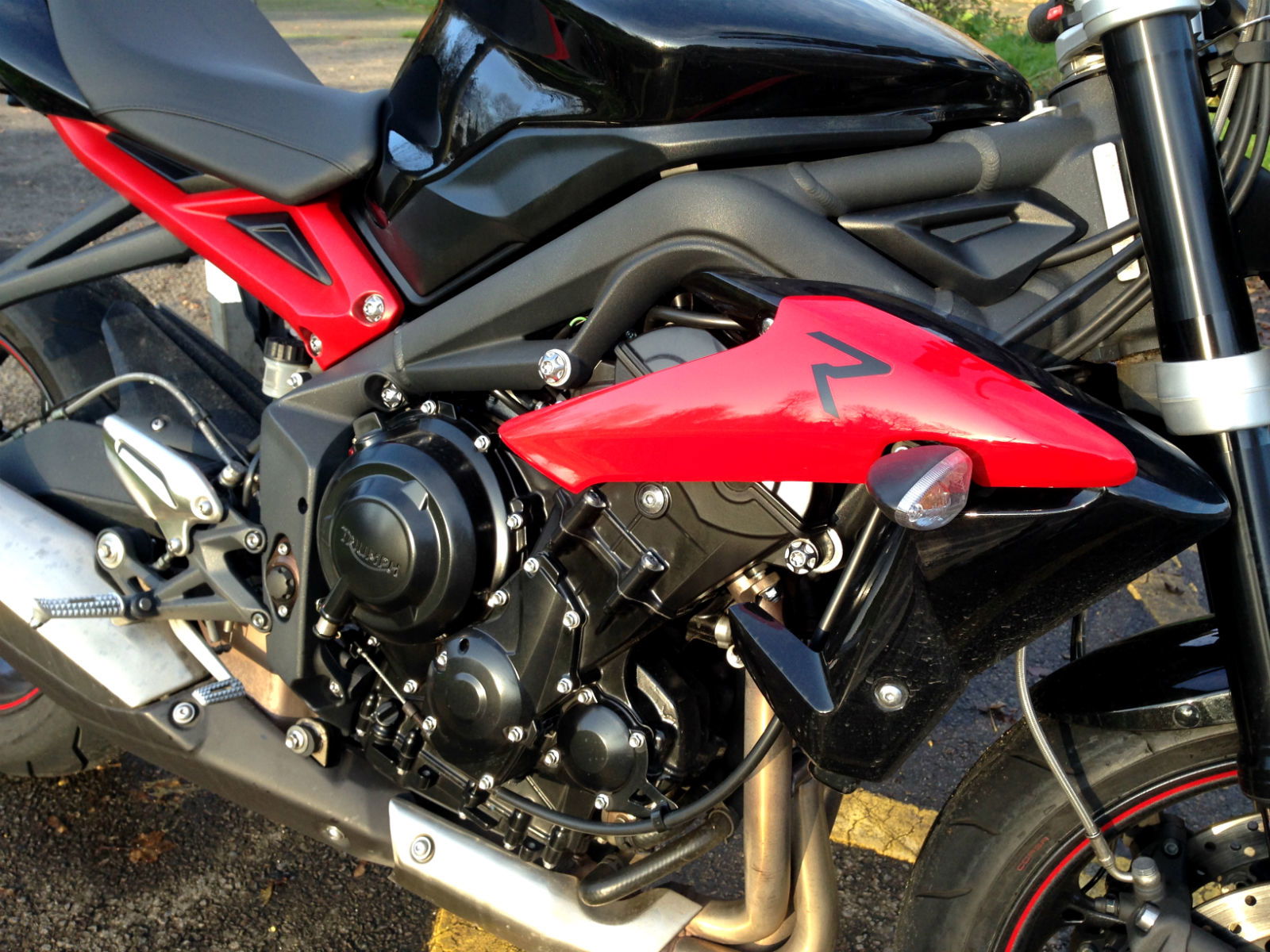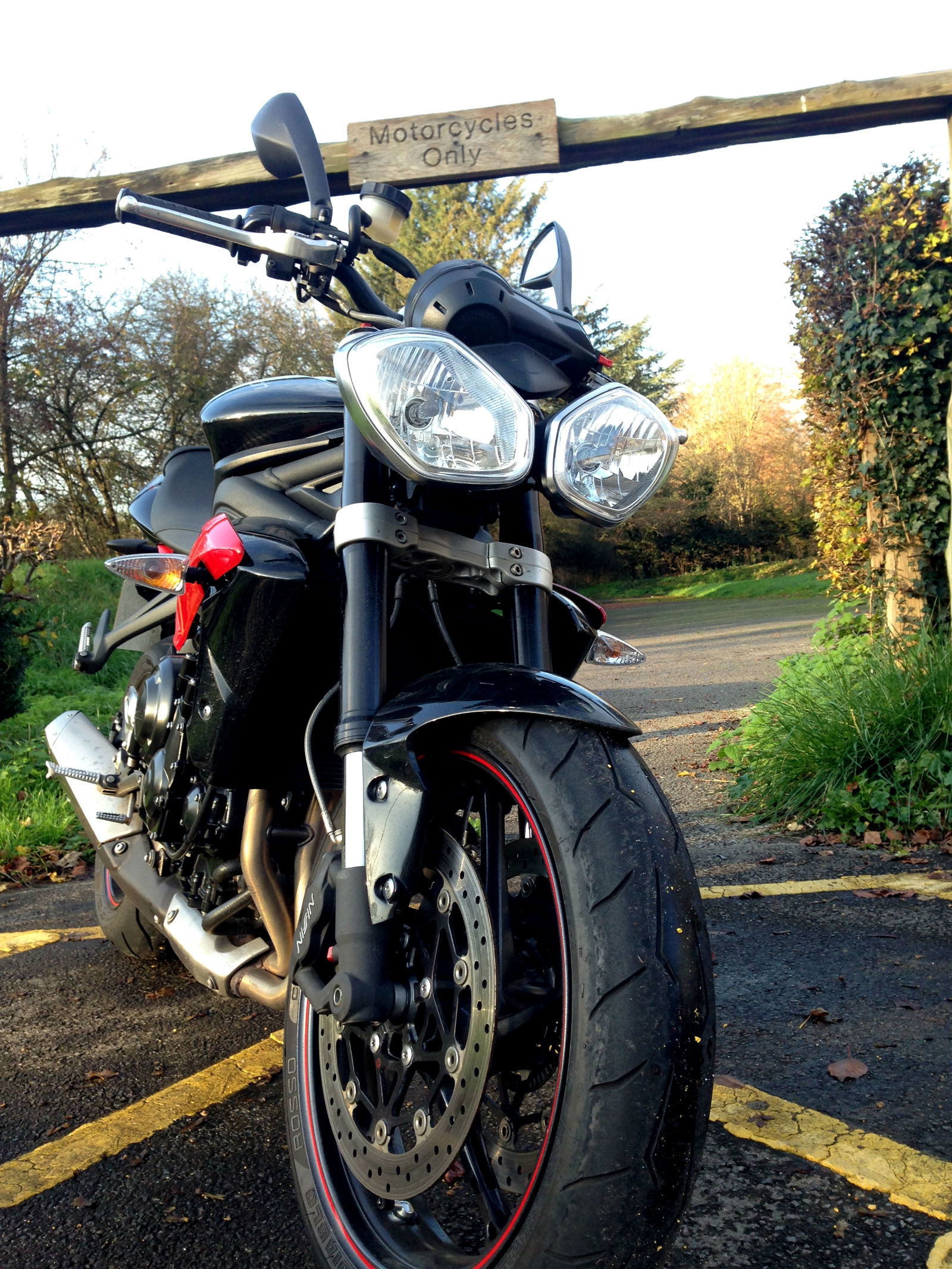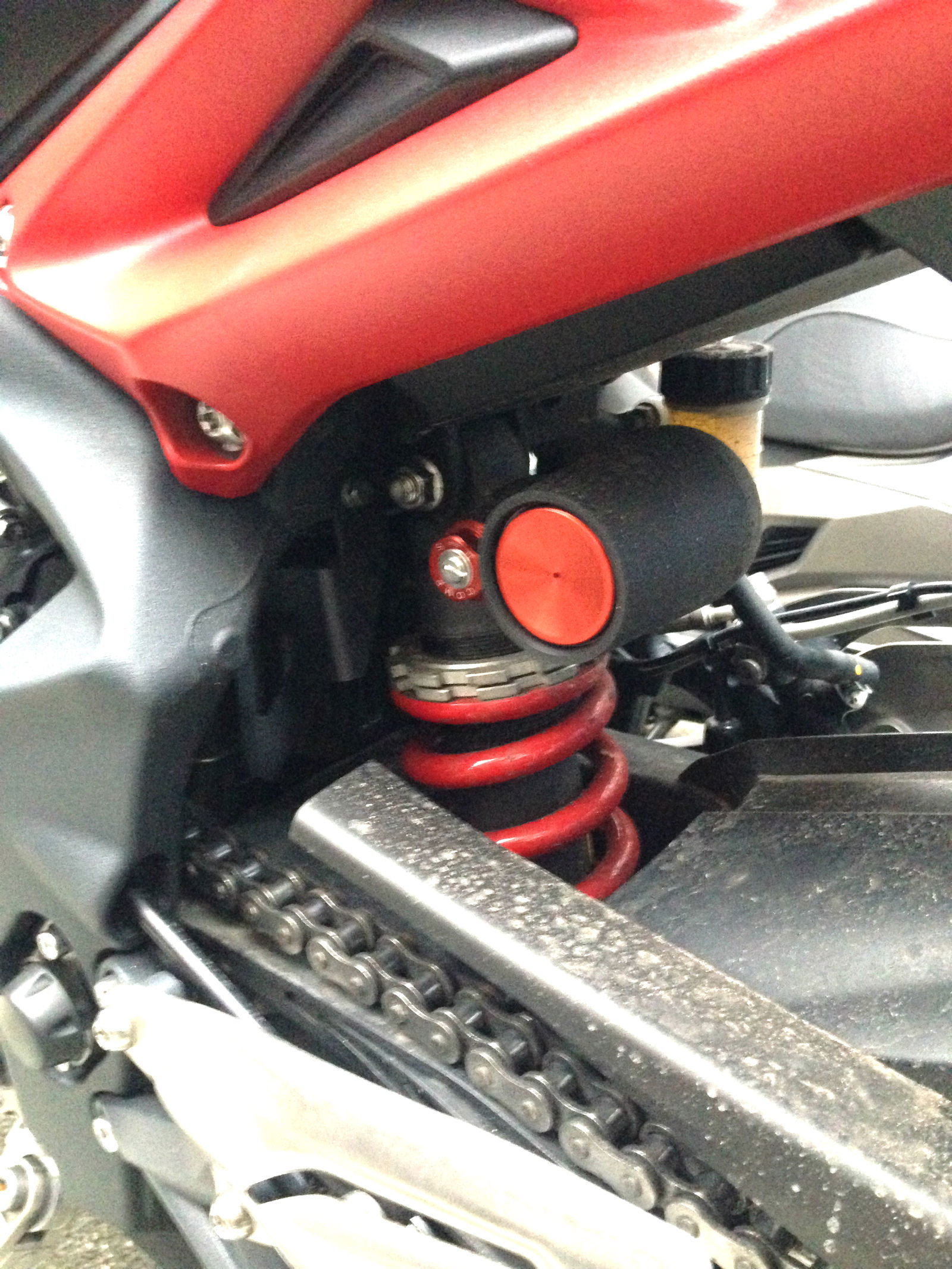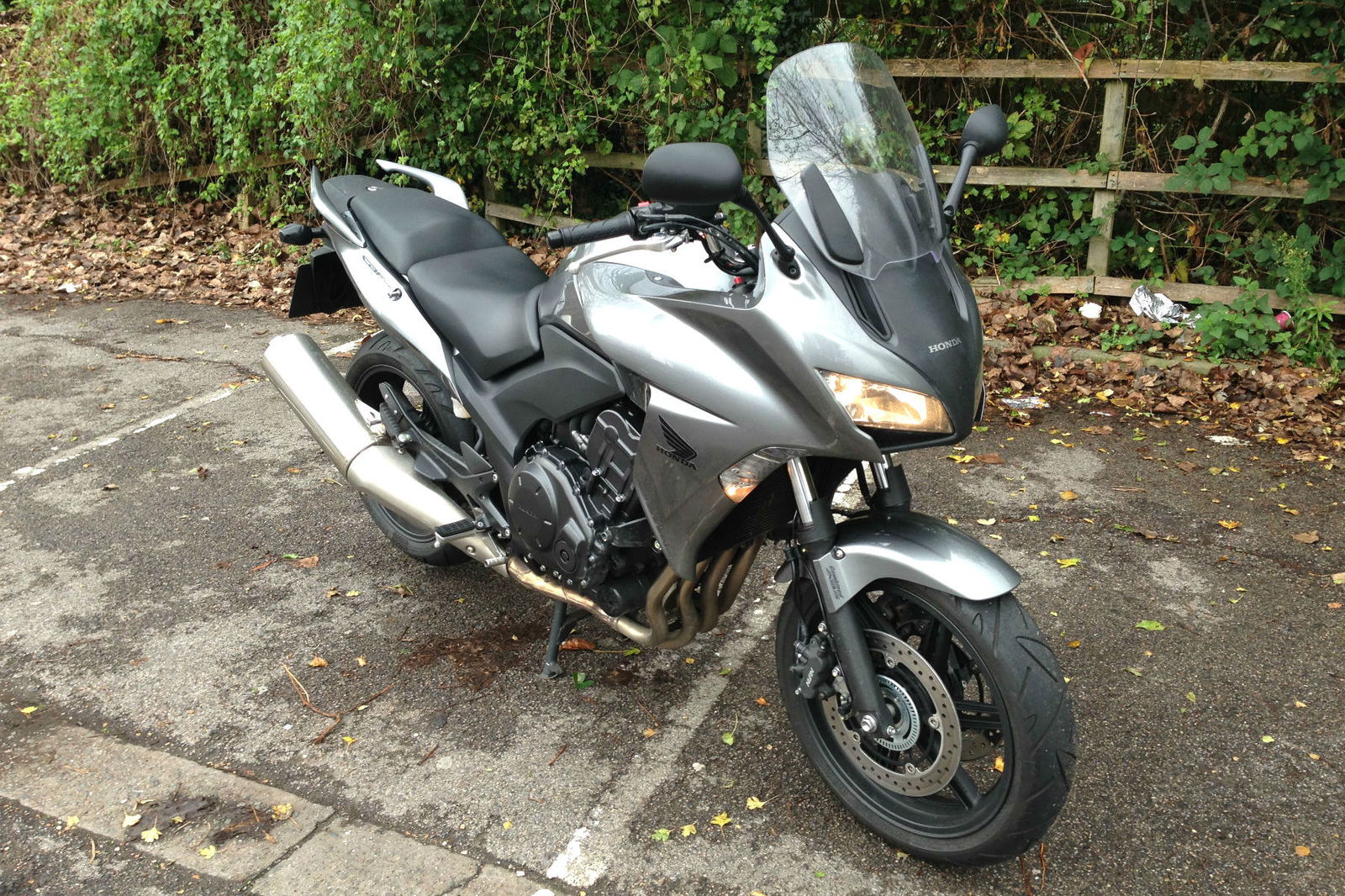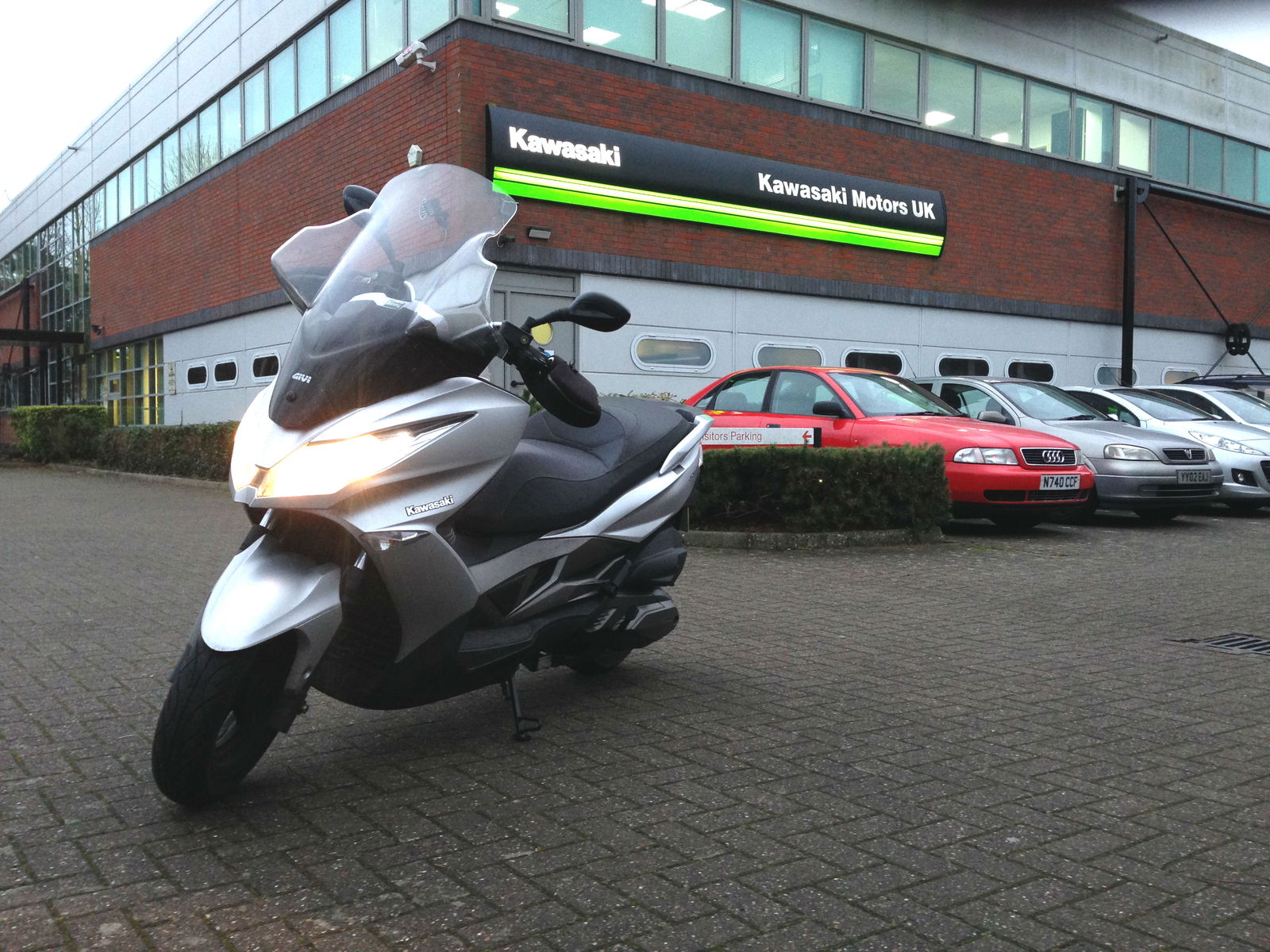Triumph Street Triple R: still the best
A week on Triumph's middleweight naked

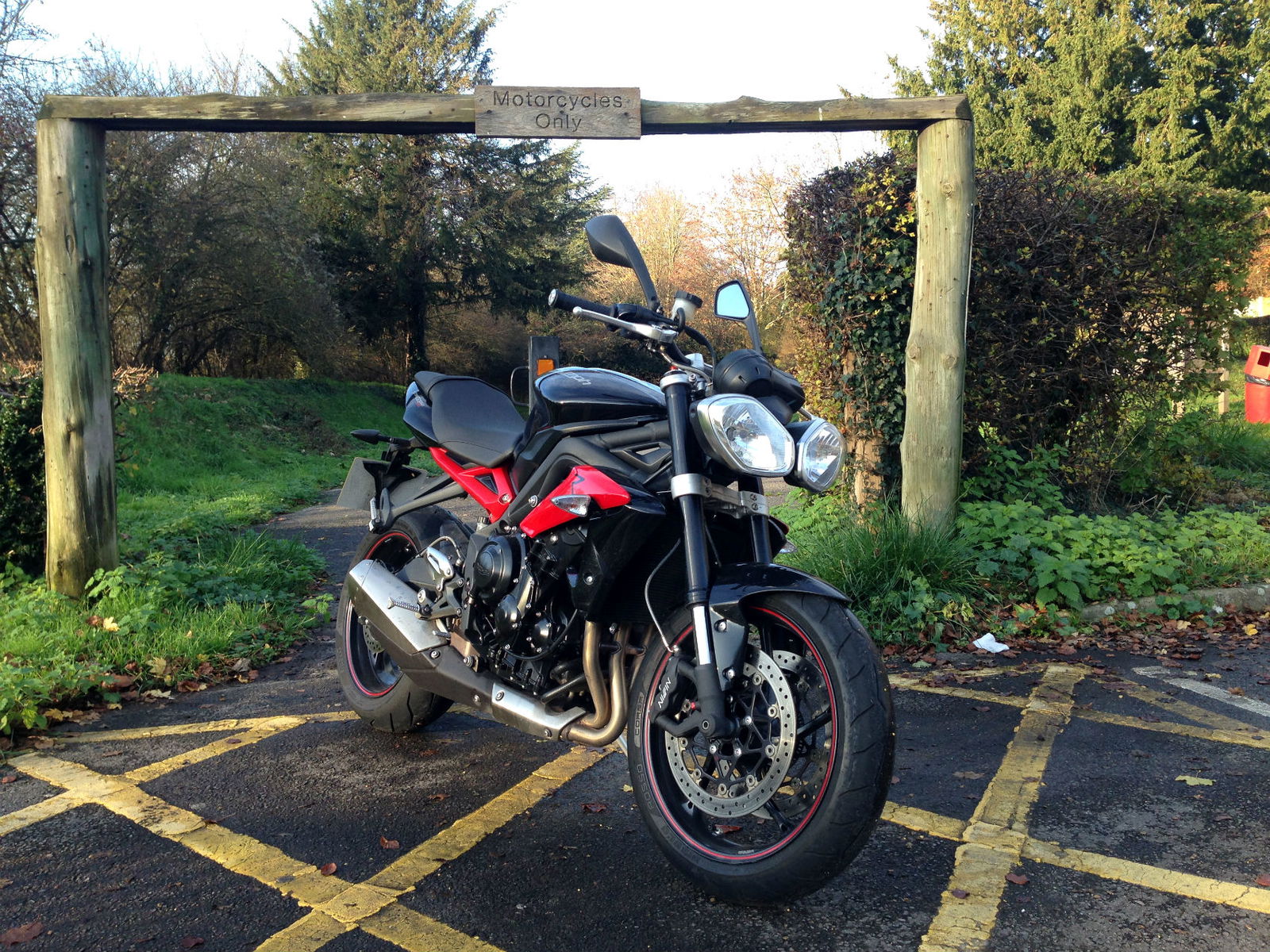
I'M a big fan of naked bikes and Triumph’s Street Triple is undoubtedly one of my favourites. So I felt it was only right to have a little play on one before we headed into the wet misery that is British wintertime.
I opted for the R model over the standard bike because it has beefier brakes and fully adjustable suspension, although I’d be lying if I said that attractive red subframe played no part in my decision making process.
This is the third generation of the Street Triple. First came the bug-eyed underseat exhaust model in 2007, then the revamped 2011 model with side-slung exhaust and new slanted headlights, and now this latest model launched in 2013.
It’s 6kg lighter than before with the majority of that weight being shed from the exhaust and revised rear wheel, reducing the Street Triple’s unsprung weight and lowering the centre of gravity for sharper, more agile handling.
And for those wondering why so little has changed since the first iteration of the ‘Striple’, you only need to look at how successful the original bike was straight off the bat. Best-selling model in Triumph’s line-up for over five years - why risk ruining a good thing?
Commuting, B-road hooning, or mellow motorway miles - take your pick, the Triumph seems to excel at just about everything. In fact, after a week of testing I haven’t really found anything to complain about. Not without sounding pedantic anyway.
Fire up the 675cc motor and you’re welcomed by that distinctive triple whirr. It only takes a few blips of the throttle to appreciate the fast-revving nature of the Street Triple’s powerplant. It sounds clichéd but the three-cylinder engine still offers such a perfect blend of top end power and useable torque. It’ll rev to 12,500rpm but most of the time you could easily make do with using only half of that - it’s all you’ll ever need on the road and perfect for a short circuit.
Thanks to a new intake it sounds good too. It’s a bit like the new Honda Crossrunner I tested last month, not overwhelmingly loud at idle but with an addictively throaty induction noise above 6,000rpm. If I owned one I’d be in two minds over fitting an aftermarket pipe for fear that the newfound exhaust noise would mask that satisfying snarl from the airbox.
Along with a slightly steeper rake angle and less trail for more responsive handling, the R model also gets fully adjustable KYB suspension over the standard bike. At low speeds the rear shock could be accused of feeling overly firm but it softens as you up the pace. The same goes for the forks, which offer ample feedback whether you’re heavy on the brakes, exiting a corner at top whack, or simply commuting to work. It makes the bike predictable and helps you exploit every bit of performance on offer.
With 105hp on tap the Street Triple is no slouch and 145mph is perfectly feasible if you find a ribbon of tarmac long enough. It shares the same gearbox as Triumph’s Daytona 675, meaning it’ll top out in first gear at 76mph compared to the previous version’s 66mph redline. Trackday riders will no doubt find the taller gear useful as it helps reduce the chance of a rear wheel lock up during high speed downshifts - a useful trait given the bike hasn’t got a slipper clutch.
One-wheel enthusiasts will no doubt appreciate the old gearbox more, where first gear meant one thing and one thing only: wheelies.
Despite weighing only 182kg fully fuelled the Triumph is impressively poised through corners. Chuck the front wheel into a bend and you’re greeted with the type of composure you’d expect from a sports bike. There’s no wobble or weave like you’d get on Yamaha’s MT-07, for example, just endless agility and precision. I suspect the new taller 820mm seat height - which has helped increase weight distribution over the front by 3% - has something to do with that.
There’s also grip by the bucketload thanks to the Pirelli Rosso Corsa tyres and the well set-up chassis.
Braking duties are carried out by radially-mounted four-piston Nissin calipers, as opposed to the floating twin-pistons on the non-R model. With only £700 splitting the two bikes I would opt for the R model every time. To me, the brakes alone are worth the extra cash; the adjustable suspension, sharpened geometry, visual tweaks and lighter wheels are just further icing on an already well-decorated cake. Disengageable ABS now comes as standard on both models too.
Triumph also claims improved fuel economy on this latest model thanks to new throttle bodies. With some back-of-a-fag-packet maths I calculated my loan bike averaged 39mpg after a week of city commuting and a day of hooning. The fuel light came on near the 140-mile mark so expect to see around 180 miles from the 17.4l tank.
The Street Triple could well be accused of needing more ‘go’ but I think the modest power figure is what makes it so good. It has just the right amount of grunt. Arguably, it has just what you need, not want. Combine that with the high quality finish, top-notch styling and impressive spec sheet, and you can’t really go wrong.
Triumph’s Street Triple R: still the best middleweight naked on the market*.
*In my opinion.
Model tested: Triumph Street Triple R
Price: £8,149 on-the-road
Power: 105hp @ 11,850rpm
Torque: 50lbft @ 9,750rpm
Fuel economy: around 40mpg
Wet weight: 182kg
Tank capacity: 17.4 litres
Seat height: 820mm
Availability: Now
Colours: Black or white
